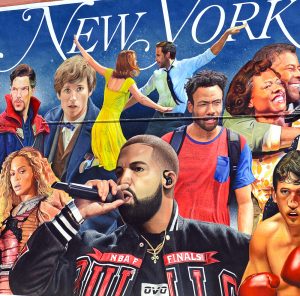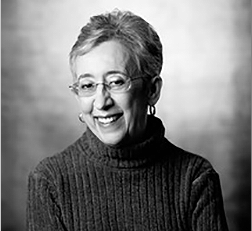 While it is possible to find mysteries, from fluffiest to darkest, that take place in the author’s version of never-never land, I prefer mysteries set in some semblance of the real world. There, diversity equals reality.
While it is possible to find mysteries, from fluffiest to darkest, that take place in the author’s version of never-never land, I prefer mysteries set in some semblance of the real world. There, diversity equals reality.
How do we incorporate the varied world around us–races, disabilities, sexual identities and so on–into our storytelling? And how do we do it accurately and naturally? I’ve been thinking about this a lot lately. I’ve written about the importance of including real life diversity in mystery fiction. Depictions and plots that reflect that are an important part of the issue, but it does not end there. Deeper and more complicated is the question of how to write important characters from backgrounds not our own.
If you want to see a bunch of writers with smoke coming out of their heads, suggest that it is not possible, or even merely that it is hard, to write different gender, different race, ethnicity, or other difference, and do it well. It’s such a touchy subject that even as I write this, there is a heated discussion on a mystery writers e-list. “Censorship” has been mentioned. With heat.
It’s true that writing only what we know personally would be pretty boring and limited: own gender, own age, own background, own experiences. Writers observe and imagine! Nothing is off limits.
Well, yes. And no. Doing it well might be harder than it seems at first.
After all, it’s not what we don’t know that trips us up. We all know how to research. It’s what we think we know … but we don’t. Let’s not forget there was a time, quite recently, when “everyone knew” that women are not logical enough to do law, all Asians are good at math, and all African-Americans are athletic. Some people would still sign on to those ideas, even without hatred, and never recognize that it is prejudice.
And there was a time, not even that long ago, that “everyone knew” that “ladies” were too delicate for the workplace, Africans were not fit for any work but manual labor, the Irish were drunks, and Jews cheated at business. Need I go on?
It’s certainly disconcerting to read old favorites from earlier 20th century and see the everyday, ordinary prejudice. It was “normal” to write it because “everyone” knew it was true. For instance, the casual anti-Semitism in British mysteries of the pre World War II decades is chilling in light of history.
Another example comes from my early career in children’s books, at a time when everything was being reassessed. A beloved classic book included an African prince who reads fairy tales and goes off to find his own Sleeping Beauty. And when he awakens a girl sleeping in her garden she says, “You are ugly. You are too black.” So he puts white coloring on his face. Anyone who is not appalled by that is not thinking hard enough. And yet, at the time it was published, there was no problem with it.
It seems fairly arrogant to assume that everything we – in all our talented glory – think we know, now, about “other” communities, would pass the reality test by someone within the community.
We don’t need to look any further than some lauded 20th century male American writers who could never separate their own feelings about women from writing about women. It was always from the outside, the male gaze in action, and their women are never quite convincing. At least, to other women.
On the other hand, one of the most powerful depictions of being an old man I’ve ever read was written by a young woman in her twenties. She was writing outside her experience in multiple ways but it was so sensitively observed, so complex in characterization , that it seemed powerful and truthful. Of course, I don’t know what a very old man would say.
Complexity might be the key word here. If you want to go beyond populating the background of your book with believable diversity, and make that character a bigger part of the story, then make him or her complex. As we all are. The Mexican worker in the grocery store has big dreams for a smart child. The teen in a wheelchair is going to a rock concert. The Nepali manicurist has conflicts with her teen-age son. The Jamaican nanny just became a citizen. And they all have feelings and opinions about all of it.
We need to read and ask questions, a lot, before we decide what to include.
You may be able to include a minor character, but not an important one. You may be able to include an important one, but not as the narrator, because you would not have the voice or accent just right. People who speak Spanish with different accents in their native language also speak English with a different accent. And there’s more to sounding West Indian than sprinkling in “mon.”
I have actually stopped reading a few mysteries because they seemed so unconvincing and only found out later that the authors, writing in the first person, were using a different gender voice.
Are there any easy answers? No, of course not, and why should there be? Incorporating diversity has been a tough subject in our whole society from the beginning and is only bigger and harder lately. In our writing lives, I think a good start is to really listen to what people say and how they say it, to research, to question our own assumptions, and to be respectful. A caricature of any kind, a hateful name, even a stereotyped compliment, has no place in honest writing.
 Triss Stein grew up in northernmost New York State but has spent most of her adult life in Brooklyn. She writes mysteries about the history and neighborhoods of her constantly changing adopted home. In her new book, Brooklyn Wars, the heroine witnesses a murder at the famous Brooklyn Navy Yard and finds herself drawn deep into old and current conflicts.
Triss Stein grew up in northernmost New York State but has spent most of her adult life in Brooklyn. She writes mysteries about the history and neighborhoods of her constantly changing adopted home. In her new book, Brooklyn Wars, the heroine witnesses a murder at the famous Brooklyn Navy Yard and finds herself drawn deep into old and current conflicts.
